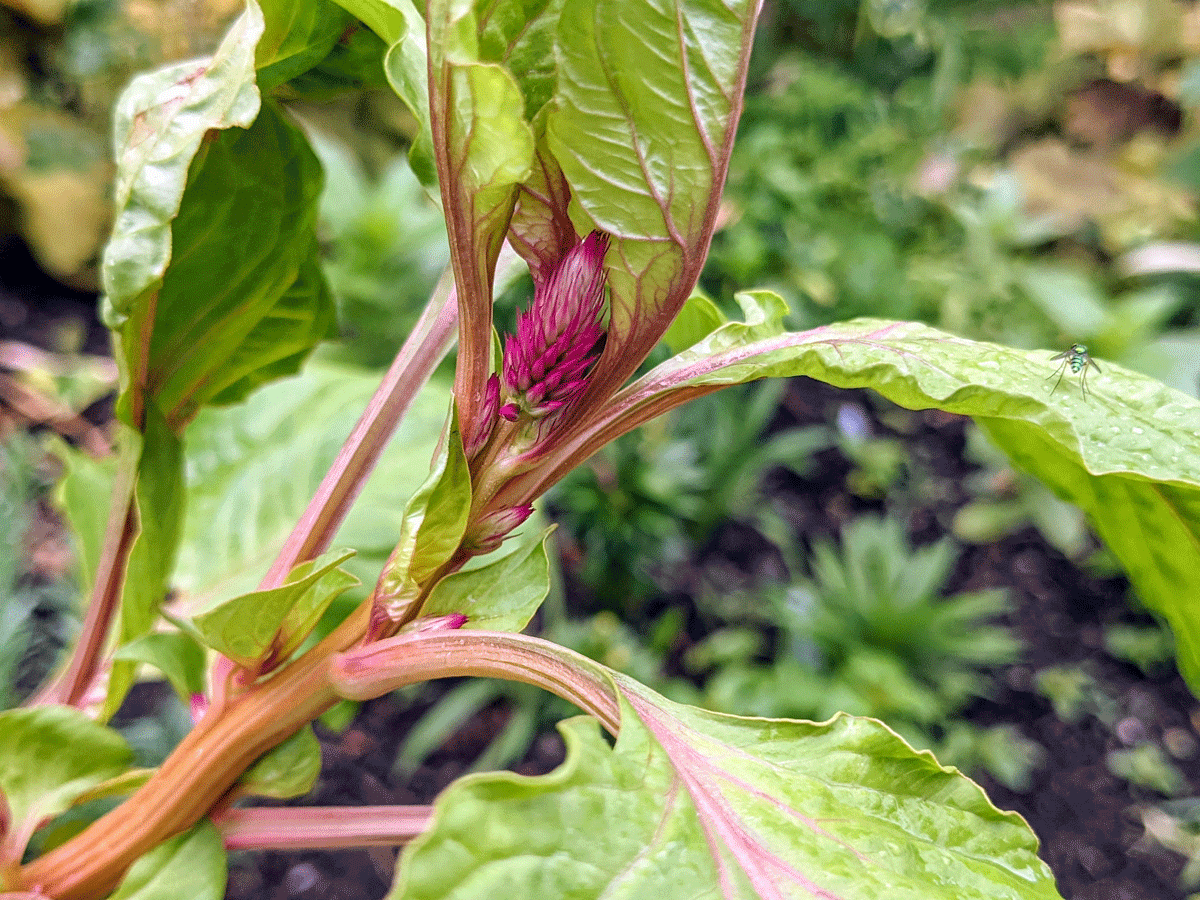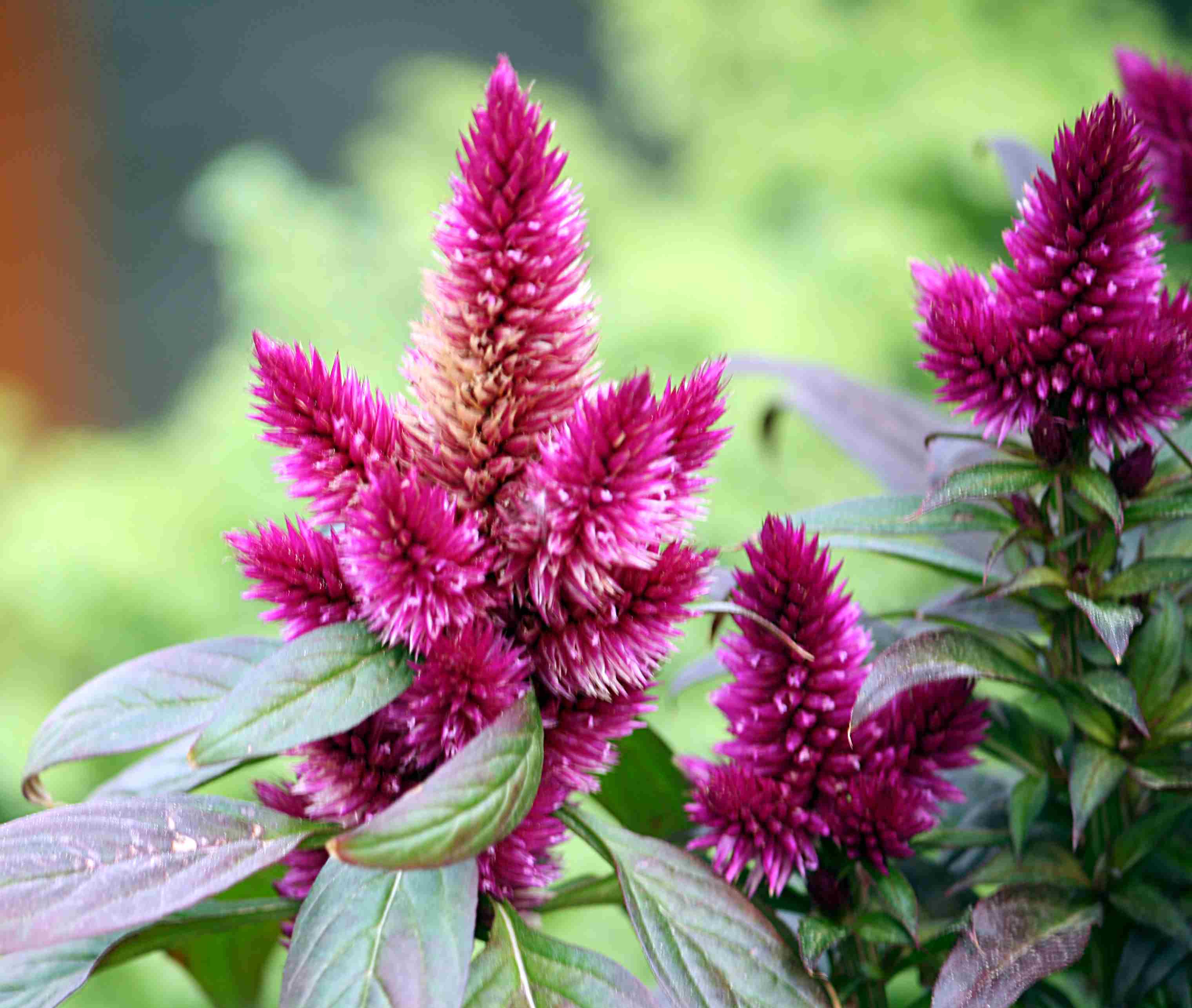How To Choose The Right Location For Your Celosia Plant is a crucial step in ensuring your vibrant, feathery blooms thrive. Celosia plants, known for their striking plumes and unique shapes, require specific conditions to flourish. Understanding their needs and assessing your location’s suitability is key to cultivating healthy, vibrant celosia.
From analyzing sunlight levels to evaluating temperature and humidity, this guide will equip you with the knowledge to select the perfect spot for your celosia, whether you’re planting indoors or outdoors.
Celosia plants come in a variety of types, each with its own unique requirements. Some prefer full sun, while others thrive in partial shade. Understanding the specific needs of your chosen celosia variety is essential. Additionally, factors like temperature and humidity play a significant role in their growth.
By carefully considering these factors, you can ensure your celosia plant thrives in its new home.
Understanding Celosia Plant Needs

To ensure your celosia thrives, understanding its specific needs is crucial. These vibrant plants require specific conditions for optimal growth, from sunlight exposure to soil composition.
Light Requirements
Celosia plants are sun-loving and require at least six hours of direct sunlight daily. They prefer a location with full sun exposure, especially during the early morning and late afternoon. However, they can tolerate partial shade, especially in hot climates.
Temperature Preferences
Celosia plants are warm-season annuals that thrive in temperatures between 70°F and 85°F (21°C and 29°C). They are sensitive to frost and cold temperatures, so it’s best to plant them after the last frost has passed.
Humidity Needs
Celosia plants prefer moderate humidity levels. While they can tolerate some dryness, they may benefit from occasional misting or watering during hot, dry weather.
Celosia Types and Their Specific Needs
There are several types of celosia plants, each with slightly different needs:
- Celosia argentea var. cristata (Cockscomb Celosia):This type is known for its unique, crested flower heads that resemble a rooster’s comb. They prefer well-drained soil and full sun.
- Celosia argentea var. plumosa (Plume Celosia):This type features feathery, plume-like flower heads. They are relatively easy to grow and tolerate a wider range of conditions than other celosia types.
- Celosia argentea var. spicata (Spiked Celosia):This type has tall, slender flower spikes that resemble wheat. They prefer full sun and well-drained soil.
Soil Preferences, How To Choose The Right Location For Your Celosia Plant
Celosia plants thrive in well-drained soil that is rich in organic matter. They prefer a soil pH between 6.0 and 7.0.
- Drainage:Proper drainage is essential for celosia plants, as they are susceptible to root rot in overly wet soil.
- Nutrient Content:Celosia plants require a moderate amount of nutrients, especially nitrogen and phosphorus. You can amend the soil with compost or fertilizer to provide these essential nutrients.
Assessing Your Location
Once you have a basic understanding of your Celosia plant’s needs, it’s time to consider the specific location where you plan to grow it. Choosing the right spot will ensure your plant thrives and produces vibrant blooms.
Sunlight Requirements
The amount of sunlight your chosen location receives is crucial for your Celosia’s growth and flowering. Celosia plants require a minimum of six hours of direct sunlight per day to flourish.
- Direct Sunlight:Direct sunlight is the most intense type of sunlight, providing the highest amount of energy for photosynthesis. Celosia plants need a good amount of direct sunlight, especially during the early stages of their growth. Aim for a location that receives at least six hours of direct sunlight, preferably in the morning or afternoon.
- Indirect Sunlight:Indirect sunlight is less intense than direct sunlight and can be found in areas that are shaded by trees or buildings. While Celosia plants can tolerate some shade, they will not flower as profusely in indirect sunlight. If your location receives only indirect sunlight, consider providing supplemental lighting to ensure your plant gets enough light.
Temperature Range
Celosia plants prefer warm temperatures and thrive in environments with a minimum temperature of 60°F (15.5°C). They are sensitive to cold temperatures and may experience stunted growth or even die if exposed to frost.
Choosing the right location for your celosia plant is crucial for its success. Celosia thrives in warm, sunny spots with well-drained soil, and you should ensure that the area receives at least six hours of sunlight daily. To learn more about the specific climate and conditions that best suit celosia, check out this article on The Best Climate And Conditions For Growing Celosia.
By understanding the plant’s needs, you can select a location that will encourage healthy growth and vibrant blooms.
- Growing Season:During the growing season, which typically lasts from spring to fall, Celosia plants prefer temperatures between 70°F and 85°F (21°C to 29°C). These warm temperatures promote vigorous growth and abundant flowering.
- Winter Conditions:In areas with cold winters, Celosia plants are typically grown as annuals, meaning they complete their life cycle in one growing season. If you live in a region with a mild winter, you may be able to overwinter your Celosia plant indoors, providing it with a warm and bright location.
Humidity Levels
While Celosia plants can tolerate a range of humidity levels, they prefer environments that are moderately humid.
- High Humidity:High humidity levels can lead to fungal diseases, such as powdery mildew. If your location is prone to high humidity, ensure good air circulation around your Celosia plant to prevent moisture buildup.
- Low Humidity:In areas with low humidity, your Celosia plant may require more frequent watering to prevent dehydration. You can also increase humidity levels by placing a tray of water near the plant or by misting its foliage regularly.
Selecting the Right Spot
Choosing the perfect location for your celosia plant is crucial for its healthy growth and vibrant blooms. Consider the plant’s specific needs and your available options to ensure a thriving environment.
Evaluating Indoor and Outdoor Environments
The first step in selecting the right spot is to decide whether your celosia will thrive indoors or outdoors. This depends on your climate and the specific type of celosia you’re growing.
- Indoor Celosia:Indoor locations provide controlled environments, shielding your plant from extreme weather conditions. However, it’s important to ensure adequate sunlight. South-facing windows are ideal, while north-facing windows may require supplemental lighting.
- Outdoor Celosia:Outdoor locations offer ample sunlight and fresh air, promoting vigorous growth. However, consider the climate and your region’s average temperatures. Celosia prefers warm temperatures, so choose a location that receives at least six hours of direct sunlight daily.
Analyzing Balcony, Patio, and Garden Locations
Once you’ve decided on indoor or outdoor placement, consider the specific location within your chosen environment.
- Balcony:Balconies can provide excellent sunlight exposure for celosia. Choose a sunny spot, preferably facing south or west. Consider the size of your balcony and the celosia variety you’re growing, ensuring enough space for the plant to thrive.
- Patio:Patios offer a similar environment to balconies, with the advantage of often being larger. Select a location with good sunlight exposure, preferably south-facing or with partial shade during the hottest hours of the day.
- Garden:Gardens provide the most natural environment for celosia. Choose a location that receives at least six hours of direct sunlight daily. Consider the soil type and drainage, ensuring the soil is well-draining to prevent root rot.
Comparing Location Suitability for Different Celosia Types
The specific type of celosia you’re growing influences the ideal location. Here’s a comparison table to guide your decision:
Celosia Type |
Indoor Suitability |
Outdoor Suitability |
Ideal Location |
|---|---|---|---|
Plumed Celosia (Celosia argentea var. cristata) |
High |
High |
Sunny windowsill, balcony, patio, or garden |
Cockscomb Celosia (Celosia argentea var. plumosa) |
Moderate |
High |
Sunny balcony, patio, or garden |
Spiked Celosia (Celosia argentea var. spicata) |
Low |
High |
Sunny garden location |
Optimizing the Location: How To Choose The Right Location For Your Celosia Plant
Once you’ve chosen a location that meets your celosia’s basic needs, it’s time to fine-tune it to create the ideal environment. This involves adjusting factors like light levels, temperature, and humidity to ensure your plant thrives.
Adjusting Light Levels
Celosia plants need plenty of sunlight, ideally at least six hours a day. However, too much direct sun can scorch their leaves. To achieve the perfect balance, consider the following:* Direct Sunlight:If your chosen location receives full sun, you can provide shade during the hottest part of the day.
This can be done by using a shade cloth, strategically placing your plant under a tree, or moving it to a less sunny spot for a few hours.
Indirect Sunlight
If your location offers partial shade, you may need to supplement with artificial light. A grow light placed near your celosia plant can provide the additional light it needs, especially during winter months when natural sunlight is limited.
While celosia thrives in full sun, they can still flourish in partially shaded areas, especially during the hottest months. If your garden lacks full sun exposure, don’t despair! You can still enjoy the vibrant colors of celosia by planting them in a spot that receives at least four hours of direct sunlight daily.
For tips on successfully growing celosia in shaded conditions, check out this helpful guide: How To Grow Celosia Plants In Shaded Areas. By choosing the right location and providing the necessary care, you can ensure your celosia plants thrive and bring a splash of color to your garden, even in partially shaded spots.
Maintaining Temperature and Humidity
Celosia plants thrive in warm temperatures, ideally between 70°F and 80°F. However, they can tolerate temperatures as low as 60°F. Here’s how to manage temperature and humidity:* Temperature:If your location is too cold, consider using a space heater or placing your celosia plant near a heat source.
In warmer climates, you can use a fan to circulate air and prevent overheating.
Humidity
Celosia plants prefer moderate humidity. If your location is dry, you can increase humidity by placing a tray of water near your plant or using a humidifier.
Preparing the Soil
The right soil is crucial for your celosia’s health. Celosia prefers well-draining soil that’s rich in organic matter. Here’s how to prepare the soil:* Soil Type:Use a potting mix specifically designed for flowering plants. This type of mix typically contains peat moss, vermiculite, and perlite, which provide good drainage and aeration.
Amendments
Adding compost or aged manure to the soil will enhance its fertility and improve drainage. You can also incorporate a slow-release fertilizer to provide your celosia with essential nutrients.
Final Thoughts

Choosing the right location for your celosia plant is a critical step in ensuring its vibrant growth. By understanding the plant’s needs and carefully assessing your available options, you can create an environment that fosters healthy development. From analyzing sunlight levels to evaluating temperature and humidity, this guide has provided a comprehensive framework for selecting the ideal spot for your celosia.
With a bit of planning and attention to detail, you can cultivate a thriving, eye-catching display of celosia blooms that will enhance your garden or indoor space.
FAQ Guide
What are the signs of an unsuitable location for my celosia plant?
Signs of an unsuitable location include stunted growth, pale leaves, wilting, and a lack of blooms. These issues could indicate insufficient sunlight, extreme temperatures, or poor drainage.
Can I move my celosia plant to a new location after it’s already established?
While it’s best to choose the right location from the start, you can move your celosia plant to a new location, especially if it’s still relatively young. However, be sure to do so carefully, minimizing root disturbance and providing adequate watering and care after the move.
How often should I fertilize my celosia plant?
Celosia plants benefit from regular fertilization, especially during their growing season. You can use a balanced liquid fertilizer every 2-4 weeks, following the instructions on the product label.